by Karen Ochavo
Karen Ochavo writes about a guided birding trip for the UP Mountaineers to the Ipo Dam and Watershed. The Ipo Watershed is an important area that is under threat from illegal settlers and illegal logging. Karen’s visit is part of an ongoing program spearheaded by Mitz delos Reyes and Fredd Ochavo of UP Mountaineers and Wild Bird Club of the Philippines to protect and revitalize the watershed.
A slow start
9 August 2015, 7 AM. It was a late start for birding. The rain was on and off since last night. Good thing the dawn sky finally cleared while I was giving a brief orientation about bird watching to the first-timers. I was feeling optimistic about our birding-by-boat activity at Ipo Dam and Watershed, thanks to Mitz Delos Reyes and Fredd Ochavo (UP Mountaineers environment champions and fellow WBCP members) who organized it. I have birded here several times before and the bird lists included a lot of interesting species. I was excited for the participants, which I feel every time I guide a group of newbies. I want them to go home with a deeper appreciation for the Philippines’ birdlife, and to see how we are connected to wildlife and nature as a whole.
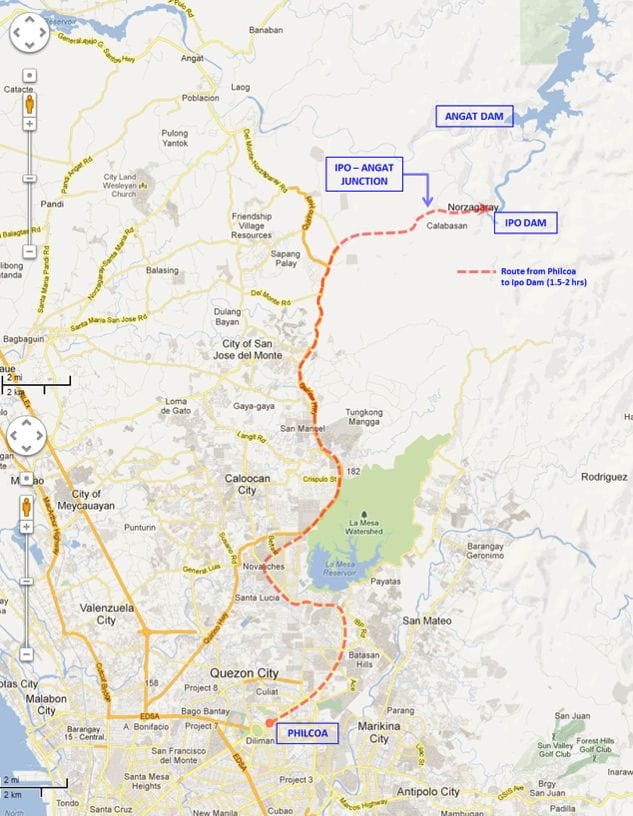
(image from https://www.google.com.ph/maps)
The participants were all outdoor enthusiasts, being members of UP Mountaineers and Mountain Climbers Alliance of the Philippines. Most of them however, when they go hiking up to peaks, have never really ‘stopped to smell the roses’, or in this case, ‘stopped to spot the birds’. Some of them told me that sometimes they hear bird calls along the hiking trails, but they couldn’t see any birds. All it takes is practice and patience, I said, and soon they will be looking forward to feathered finds aside from sunrises up in the mountains.
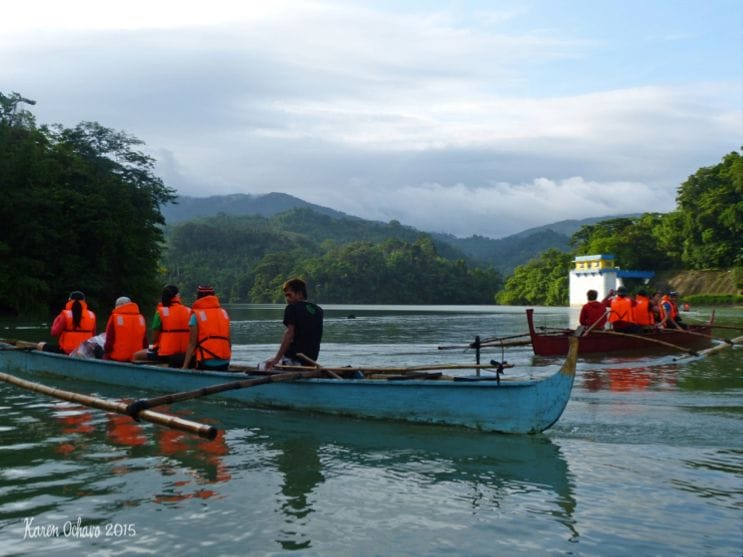
We split our group of 14 into the four boats we hired, and starting from the dam we headed upstream of the reservoir, cruising close to the banks to scan for birds. Tough luck, I thought after the first thirty minutes. It was quite tricky birding from a motorized boat because of the loud noise, and when it was time to stop and spot, the boat was still moving slowly because of the current.
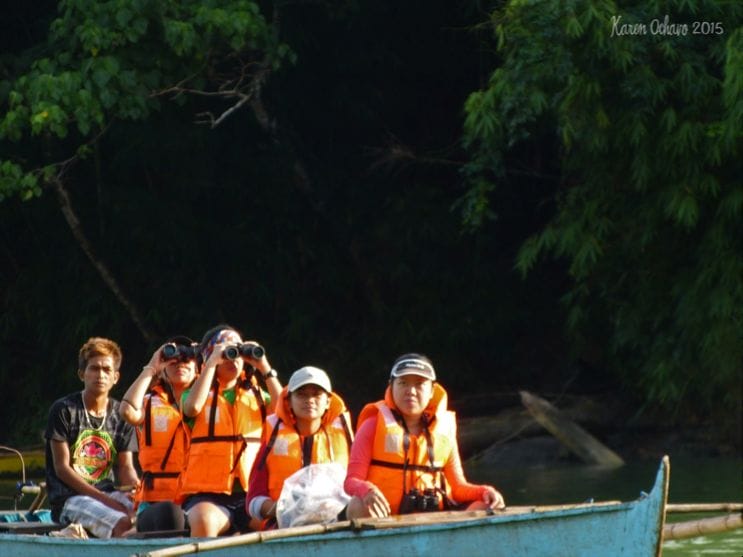
Finally, a flash of blue! A pair of Brown-breasted Kingfishers (endemic to the Philippines, but more popularly known by the name White-throated Kingfisher before the species split) displayed on bare branches by the water long enough for all the boats to see. One was even caught in the act of breakfasting. (See the video by Fredd Ochavo through this video link.)
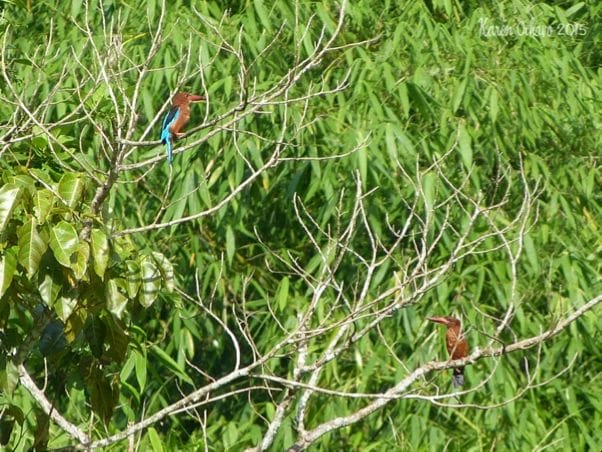
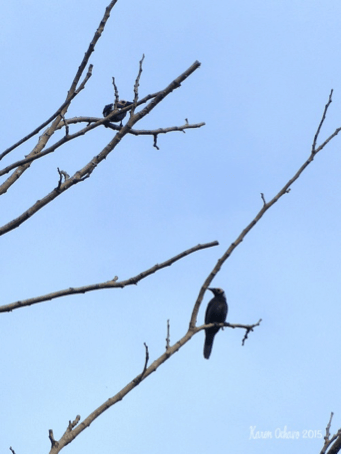
A not-so-hopeless situation
The Ipo Watershed is under the joint management of the Department of Environment and Natural Resources (DENR) and the Metropolitan Waterworks and Sewerage System (MWSS). DENR executes its mandate through its Region 3 office, while MWSS is assisted by its two water utility concessionaires Manila Water and Maynilad to operate the dam and take care of other assets together with the reservoir and the forest. Because Ipo Dam is a major component of the system that provides domestic water supply to the millions living in Metro Manila, protection of Ipo Watershed is a critical and challenging responsibility.
Formal reports as well as anecdotal findings indicate that the current level of forest protection in Ipo Watershed is not enough. (See the news on illegal logging in this news link.) According to the volunteers from UP Mountaineers who regularly conduct forest planting and nurturing activities in their “Adopt-a-Watershed” site, the number of illegal settlers seems to have increased over the past few years. Only the indigenous Dumagats have ancestral domain rights to live within a portion of the watershed. More illegal settlers means more forest land subject to clearing for dwelling and livelihood, which in turn impacts forest cover and makes the hills more vulnerable to soil erosion and landslides.
Because everything is connected in the watershed ecosystem, land degradation affects the water quality in the reservoir, the wildlife and habitats, the lives of the settlers themselves. This is a costly and widespread domino effect that affects even those in Metro Manila who depend on piped water. And of course, our beloved birds are affected too!
It is not a hopeless situation though, but implementation is just so slow. Officials from DENR, MWSS, the water utilities, and the local government units concerned had a workshop last November 2014 to figure out the best strategy to address the management problems. So while they try to fulfill their duties bureaucratic style, let’s keep sounding the alarm to the threat of watershed exploitation. The Philippine capital’s water supply is under threat. The forest flora and fauna are under threat. The birds that help keep the forest healthy are under threat. WE are all under threat.
Bucket of water
That morning we were certainly under threat—by the looming rain. We ended our birding-by-boat at around 9 AM so we can visit the UP Mountaineers’ “Adopt-a-Watershed” site before the deluge. There in Sapang Anginan is where their volunteers regularly conduct simple yet effortful activities to rehabilitate the forest and influence the settlers to better care for it. They have story telling for kids to teach them why it’s important to nurture trees and to keep rivers clean. They even incorporated bird watching, with help from WBCP members in past trips, so that the settlers will not catch birds for the illegal pet trade. It was raining heavily by the time we reached the community that the planned outdoor activity with the kids had to be postponed to another weekend when volunteers visit again.
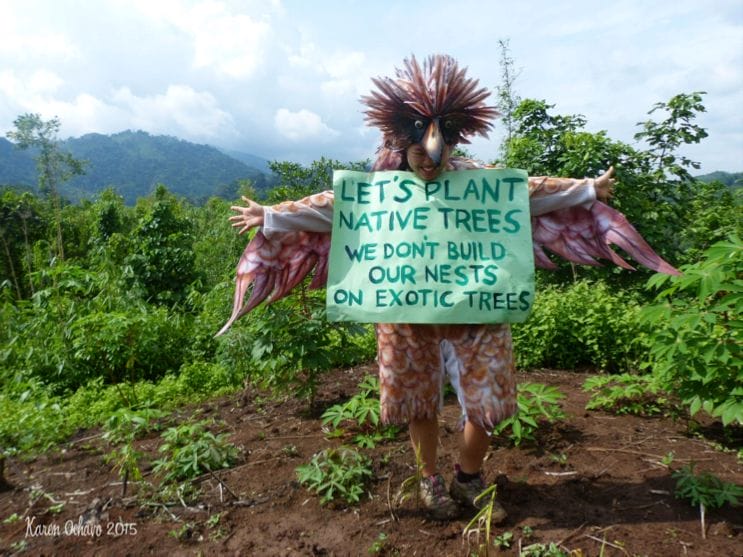
These activities are a valuable tool to prevent or at least slow down the exploitation of the watershed and help revitalize it while the responsible agencies get their act together in dealing with illegal loggers and settlers. Think of it like a bucket of water to help extinguish the threatening flames while the fire truck is still stuck in traffic…
Bright orange
By noon time we were back at the dam listing the birds we saw. We had 15 species in total, and the highlights included Indigo-banded Kingfisher, Osprey, Grey-headed Fish Eagle, Luzon Tarictic Hornbill, and Coleto. I was tad unsatisfied—I was expecting more. Maybe it was the weather? Maybe it was the bright orange life vests? Maybe the slowly degrading quality of the forest? Maybe just not our lucky birding day?
While we were packing up and getting ready for our ride back to Manila, several participants approached me to borrow my Kennedy et al. guide book. They asked me to point out again all the species that we saw that morning. Then some of them got excited and started describing birds they saw somewhere else, trying to figure out what those could be. One of them asked when the next WBCP guided trip will be. I beamed like a bright orange life vest. I was beyond satisfied.
